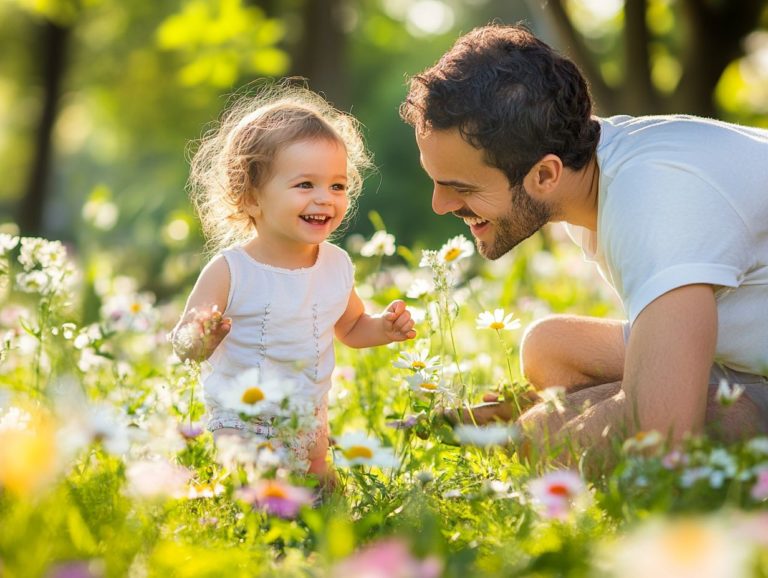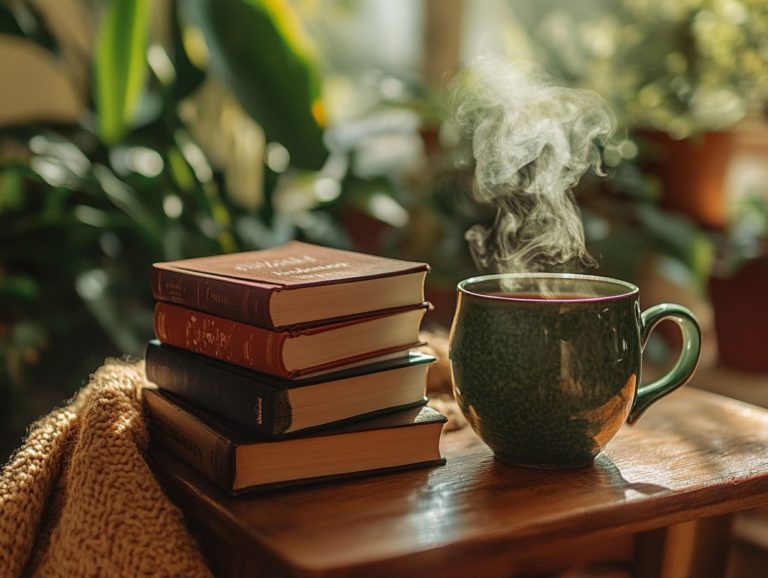Creating a Personal Retreat at Home
In today s fast-paced world, the notion of stepping away from the hustle and bustle often appears to be a luxury reserved for the fortunate. However, a personal retreat doesn t necessitate an extravagant escape; it can be as uncomplicated as dedicating time alone in the comfort of your own home.
This piece delves into the concept of a personal retreat, highlighting its significance for your well-being and offering guidance on how to effectively establish one in your own space. Whether it s for soul care or simply some quiet time, the benefits are profound.
From choosing the perfect time and setting to engaging in purposeful activities, you ll learn how to create a sanctuary for relaxation and reflection right where you are.
Contents
- Key Takeaways:
- What Is a Personal Retreat?
- Why Should You Create a Personal Retreat at Home?
- How to Prepare for a Personal Retreat at Home?
- 1. Choose a Time and Duration
- 2. Find a Quiet and Comfortable Space
- 3. Set Intentions and Goals
- 4. Gather Necessary Supplies
- Activities for Your Home Retreat
- 1. Meditation and Mindfulness
- How to Disconnect from Technology During Your Personal Retreat?
- Tips for Maintaining a Personal Retreat at Home
- Common Queries About Personal Retreats
- What is a personal retreat at home?
- Why should I create a personal retreat at home?
- How do I choose the perfect location for my personal retreat at home?
- What activities can I do during my personal retreat at home?
- How can I make my personal retreat at home feel special and unique?
- How often should I do a personal retreat at home?
Key Takeaways:
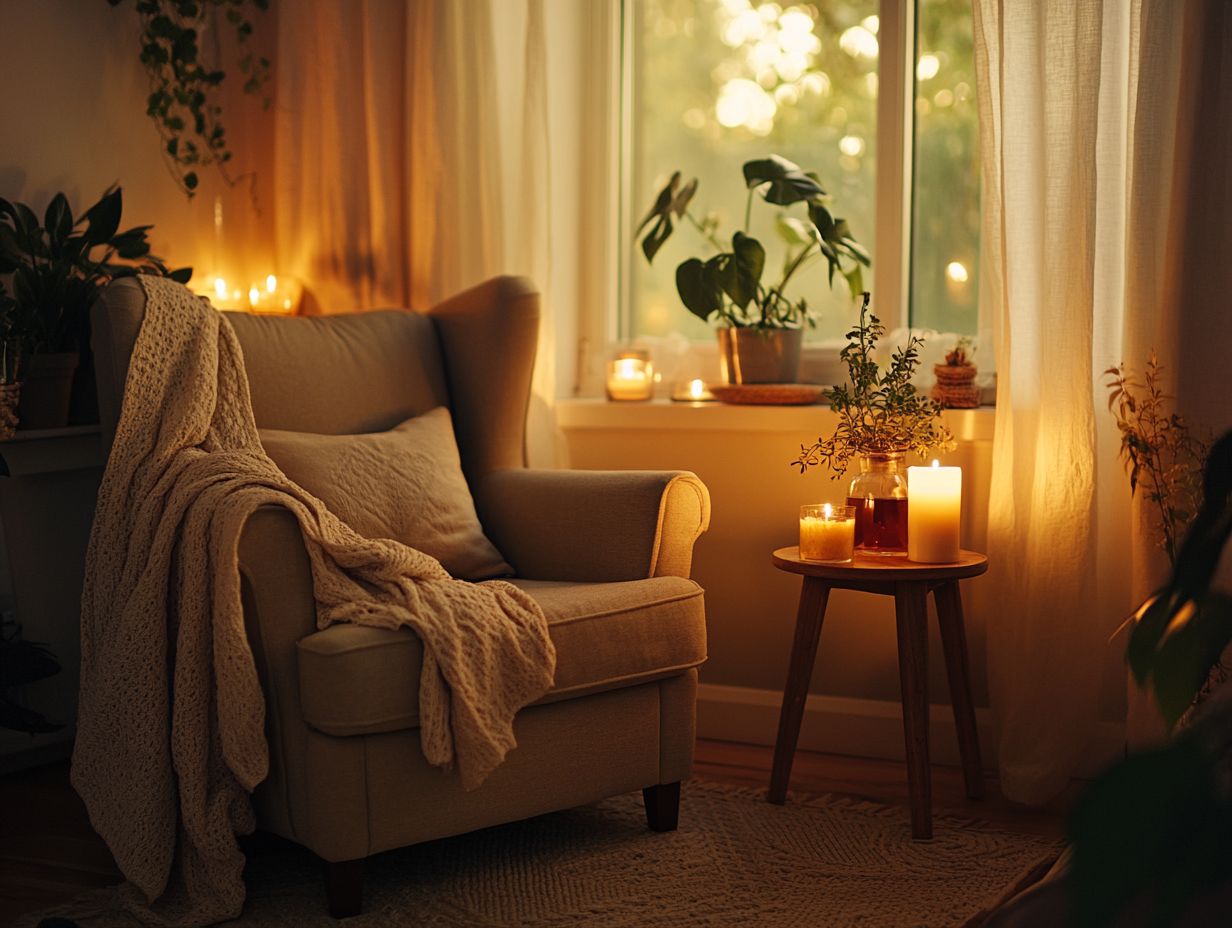
- A personal retreat at home is a designated time and space for self-care, reflection, and rejuvenation.
- Creating a personal retreat at home can improve mental and emotional well-being and provide a sense of peace and clarity.
- To prepare for a personal retreat at home, choose a time and duration, find a quiet space, set intentions and goals, and gather necessary supplies.
What Is a Personal Retreat?
A personal retreat offers you a precious opportunity to step back from the relentless pace of daily life, allowing you to immerse yourself in a tranquil setting, like the stunning mountains of Idyllwild, California. Here, you can reconnect with God and nurture your soul in a way that feels both profound and rejuvenating.
Whether you re in awe of nature s beauty at Inspiration Point or finding solace in the quietude, the experience is transformative. This sacred time is perfect for spiritual reflection, emotional release, and mindful practices that cultivate inner peace and heightened self-awareness.
During your retreat, you ll likely engage in activities that promote holistic well-being, paving the way for personal growth and renewal. Whether it involves journaling, meditation, or creative activities, each moment is an opportunity for personal transformation.
The significance of carving out space for quiet contemplation and being fully present cannot be emphasized enough.
Why Should You Create a Personal Retreat at Home?
Creating a personal retreat at home presents a remarkable opportunity for self-care and emotional healing, delivering the same benefits as a traditional retreat, all without the hassle of travel. It s a chance to foster spiritual connection, immerse in quiet contemplation, and rejuvenate both mind and spirit.
By curating a tranquil space within your own walls, you can cultivate an environment that promotes relaxation, reflection, and mindful practices. Whether your aim is to deepen your spiritual connection, foster personal growth, or simply enjoy some well-deserved solitude, a home retreat allows you to engage in being fully present and explore the depths of your inner self.
This approach can profoundly enhance your mental health and emotional well-being, making it a worthwhile investment in your overall quality of life. From deep breathing exercises to mindful practices, each aspect contributes to a balanced and fulfilling existence.
How to Prepare for a Personal Retreat at Home?
Preparing for a personal retreat at home requires careful consideration and intention to create a transformative experience that truly nurtures your soul. Begin by selecting a specific time and duration that allows you to fully immerse yourself in the retreat process.
This is your chance to break free from everyday distractions and truly focus on yourself! Planning ahead and setting clear objectives can help you stay dedicated to this enriching journey.
It s crucial to find a quiet, comfortable space within your home that can serve as your sanctuary for reflection, journaling, and meditation. By setting clear intentions and goals for your retreat, you ll provide yourself with a guiding framework that keeps you aligned with your deeper purpose throughout your journey.
1. Choose a Time and Duration
Choosing the right time and duration for your personal retreat is absolutely essential to ensure you have a fulfilling and restorative experience. It’s about creating the right environment for self-care and reflection. Schedule your retreat during periods free from distractions think weekends or holidays so you can dedicate this time solely to your well-being.
While the ideal duration may vary, even a few mindful hours will yield significant benefits. The peacefulness of autumn, for example, can be the perfect backdrop for such a retreat. You should also take your personal commitments into account, as they will influence when you can carve out time for self-reflection.
Seasonal elements, such as the tranquil beauty of autumn, can enhance your experience, providing a serene backdrop that encourages deeper contemplation. The advantages of spending time alone are well-documented and contribute positively to both emotional and spiritual health.
A well-timed retreat can work wonders for rejuvenating your spirit, helping you gain clarity and fostering personal growth. Investing time in this planning process is a vital piece of your self-care journey.
2. Find a Quiet and Comfortable Space
Finding a quiet and comfortable space at home is essential for your personal retreat, as it sets the tone for relaxation and mindfulness during your time of solitude. Seek out an area that minimizes distractions and promotes a sense of calm whether it’s a private room, a cozy corner, or even an outdoor setting that connects you with nature’s beauty.
Incorporating elements like soft lighting and comfortable seating can transform this space into a sanctuary for your retreat. Enhancing this space with soothing elements like candles and soft lighting can create the perfect atmosphere for meditation and reflection.
Adding cherished books and artwork can provide additional inspiration and comfort. Creating a serene environment can significantly elevate the quality of your retreat. Consider incorporating soothing colors, such as light blues or greens, to evoke tranquility.
Playing gentle background music or nature sounds can further enrich the ambiance, inviting you into a deeper state of relaxation. You might also want to include personal items that inspire peace, like cherished books or art that resonates with your spirit. This kind of environment promotes deep breaths and mindful exploration.
Remember, the goal is to cultivate a sanctuary that nurtures your inner peace and encourages mindful exploration, allowing you to fully immerse yourself in the healing power of quietude. This space can also be a place for worship and reflection, enriching your spiritual journey.
3. Set Intentions and Goals
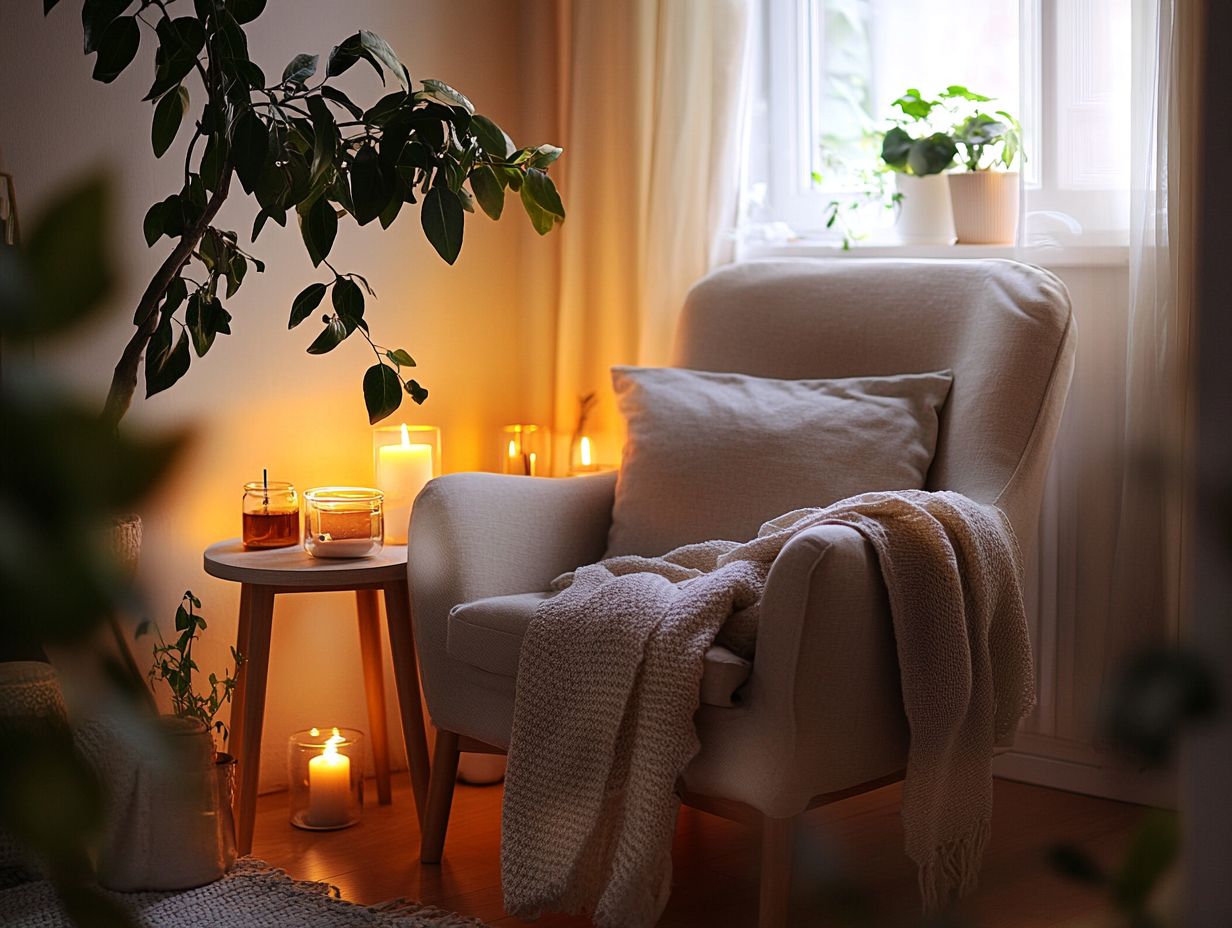
Setting intentions and goals for your personal retreat is an essential step that brings focus and direction to your journey of reflection and self-discovery. Take a moment to think about what you hope to achieve during this time whether it s deepening your spiritual connection with God, enhancing your self-awareness, or allowing for emotional release.
Clearly articulating your intentions will help you engage more effectively in practices like journaling, meditation, and other reflective activities that support your personal growth. Engaging in this process with an open heart can lead to a profound engagement with your inner self.
This proactive approach not only lays the groundwork for your retreat but also encourages a profound engagement with your inner self. As you move through various exercises, stay present and mindful, allowing your intentions to evolve as your understanding deepens.
Listening to your inner voice during this time can reveal new insights and avenues for growth. Consider tracking your progress each day and adjusting your goals to reflect any new insights you gain along the way.
By nurturing your self-awareness, you ll enhance the clarity of your purpose, creating an environment ripe for spiritual exploration. This journey is an ongoing process that can lead to lasting transformation.
Every moment spent in this retreat is an opportunity for transformation, inviting you to connect deeply with your own journey of growth. Embrace each experience as a step toward greater self-love and acceptance.
Start planning your retreat today and embrace the journey of self-discovery!
4. Gather Necessary Supplies
Gathering the necessary supplies for your personal retreat can enhance your experience. This ensures you have everything at your fingertips for journaling, meditation, and other mindful practices.
To truly immerse yourself in the journey of self-discovery, consider adding calming essential oils, plush blankets, and a delightful selection of herbal teas to your list. A mindfulness-based app can serve as a valuable companion, providing guided meditations or soothing music to accompany your introspective moments.
A camera can capture your surroundings, helping you appreciate the beauty and freedom of your retreat. Don t forget craft supplies like watercolor paints or coloring books, which can spark your creativity and promote relaxation.
Having a sketchpad on hand allows you to preserve those peaceful moments. Consider including inspirational books or sacred texts, like Psalm 148 or Luke 7, to deepen your spiritual reflection.
By thoughtfully curating these tools, you can transform your retreat into a sanctuary for releasing stress and nurturing your mind, body, and spirit. This holistic approach ensures that every aspect of your being is attended to, promoting overall balance and well-being.
Activities for Your Home Retreat
During a personal retreat at home, immersing yourself in a variety of activities can significantly enhance your experience. These activities support your journey of self-discovery and healing.
Consider engaging in meditation and mindfulness practices that anchor you in the present moment. Pair these with journaling sessions that help release emotions and facilitate reflection.
The possibilities are truly limitless! Incorporating breathing exercises can further enhance your relaxation and connection to the present moment.
Introducing creative endeavors can serve as a powerful outlet for expression. Ultimately, the activities you select should resonate with your intentions and goals for your retreat, creating a fulfilling and transformative experience.
Incorporating elements of worship or spiritual texts can deepen your experience, fostering a profound connection to God.
1. Meditation and Mindfulness
Meditation and mindfulness serve as the cornerstones of an enriching personal retreat. They offer a profound means to deepen your spiritual connection and achieve emotional equilibrium.
By dedicating time to mindful breathing exercises and meditation techniques, you anchor yourself in the present. You gently release distractions and nurture a sense of inner tranquility.
To elevate your journey even further, consider exploring various meditation techniques like guided visualization or loving-kindness meditation. Incorporating brief sessions of mindful walking or journaling can also deepen your experience.
Engaging with nature during your retreat introduces another dimension of mindfulness. Its sights and sounds serve as powerful focal points for your contemplation.
These practices offer incredible benefits, including reduced anxiety, improved focus, and an exciting sense of purpose! They are essential tools for anyone wishing to enrich their personal retreat experience.
2. Journaling and Reflection
Journaling and reflection serve as powerful allies during your personal retreat. They enable you to process emotions, articulate your thoughts, and deepen your self-awareness. When you put pen to paper, you create a safe haven for emotional release. This helps clarify your feelings and experiences in a structured way. This practice enhances your understanding of yourself and becomes a record of your transformative journey, encouraging further exploration and growth.
As you immerse yourself in this time of reflection, engaging with specific prompts can enrich your writing experience. Questions like “What emotions am I currently feeling?” or “What lessons have I learned from past experiences?” can effectively guide your contemplation.
Consider techniques like free writing, where you write continuously without worrying about grammar or structure. This approach can lead to unexpected insights. Incorporating mindfulness practices, like deep breathing before writing, enhances your focus and fosters a deeper emotional connection.
These methods facilitate deeper self-exploration and pave the way for meaningful emotional healing.
3. Creative Activities
Incorporating creative activities into your personal retreat is a delightful way to express yourself and engage your imagination while promoting self-care and relaxation. Whether you find joy in painting, crafting, or immersing yourself in creative writing, these activities are powerful outlets for the emotions and insights you gather during your retreat. Allowing your creativity to flow freely cultivates a deeper understanding of yourself and your spiritual journey.
Participating in these artistic pursuits enhances your connection to your inner thoughts and fosters mindfulness, encouraging you to embrace the present moment. Painting can be incredibly therapeutic, offering a canvas to explore colors and forms that often mirror your mood. Crafting provides a tactile connection that helps relieve stress, while creative writing serves as a vital channel for articulating feelings that may be challenging to express verbally.
Ultimately, these engaging endeavors bring personal joy and significantly enrich your retreat experience, invigorating your spirit and nurturing your emotional well-being.
4. Physical Activities
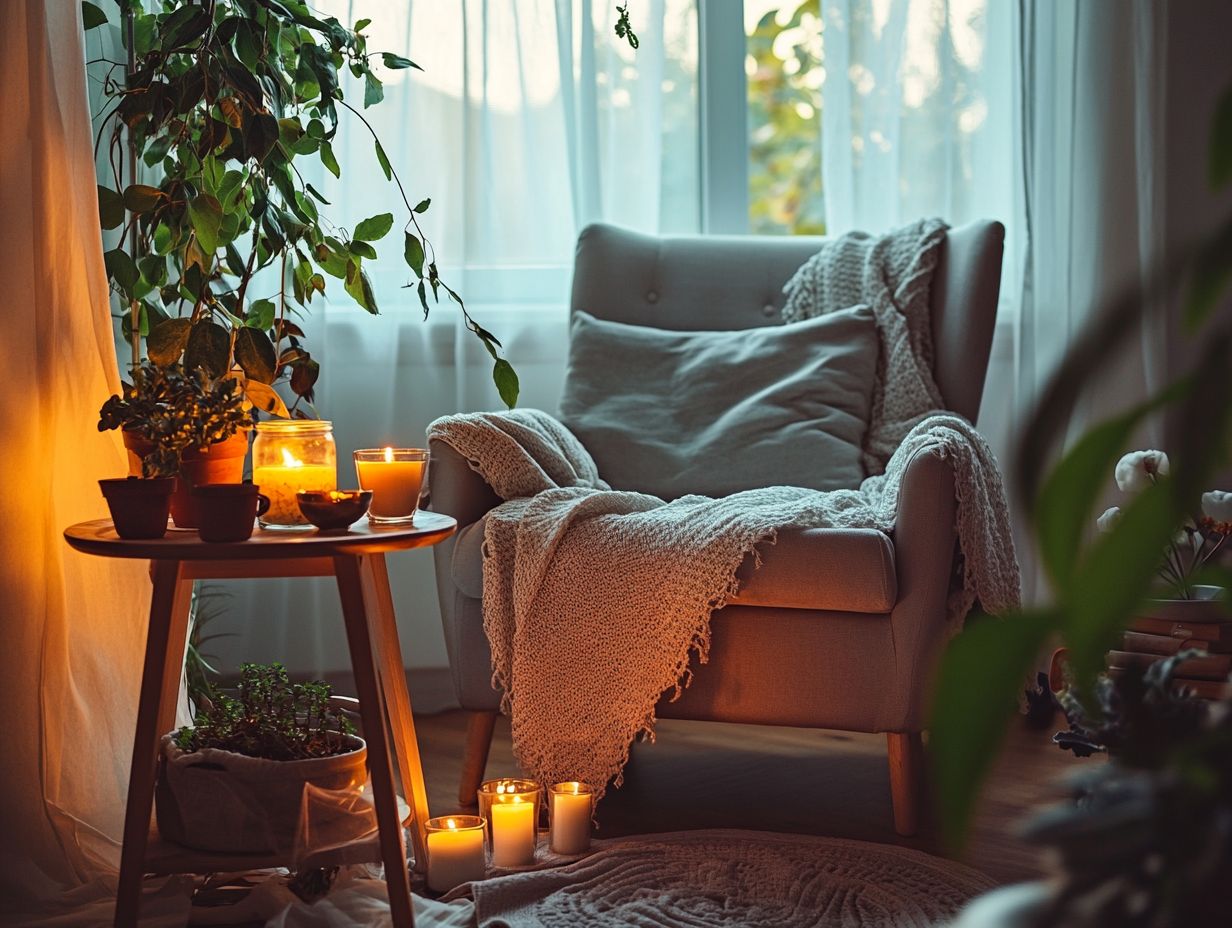
Incorporating physical activities into your personal retreat significantly enhances your mental and physical health, fostering rejuvenation and a deeper connection to nature. Whether you choose to hike, practice yoga, or enjoy a leisurely stroll, engaging in movement elevates your mood and facilitates emotional release. These activities transform your self-care routine into something truly holistic and fulfilling!
As you immerse yourself in the great outdoors while exercising, you improve your heart health and create space for reflection and meditation. If you re in the mood for something different, try tai chi in a tranquil setting or join a guided meditation walk both encourage mindfulness and awareness.
These physical pursuits stimulate the production of endorphins, the delightful happiness hormones, reinforcing your mind-body connection and enhancing your overall well-being. Ultimately, prioritizing movement during your retreat opens the door to deeper self-discovery and tranquility.
How to Disconnect from Technology During Your Personal Retreat?
Disconnecting from technology during your personal retreat is crucial for cultivating an environment devoid of distractions. This allows you to immerse yourself fully in the experience and nurture a sense of intentional presence.
By establishing boundaries with your devices and minimizing their usage, you create space for profound reflection, spiritual connection, and emotional healing. Embracing solitude opens the door to moments of clarity often obscured by the relentless onslaught of notifications and digital noise.
Tips for Maintaining a Personal Retreat at Home
To maintain a personal retreat at home, it’s time to dive into thoughtful planning and unwavering commitment. It s essential to create a space that truly fosters self-care and reflection.
Begin by establishing clear boundaries with family and friends, ensuring that your retreat time remains uninterrupted. Adhering to a planned schedule and prioritizing self-care practices activities you do to care for your mental and physical health will reinforce the purpose and benefits of your retreat.
In doing so, you cultivate an environment that nurtures growth, relaxation, and inner peace, transforming your home into a sanctuary for rejuvenation.
1. Set Boundaries with Family and Friends
Setting boundaries with family and friends during your personal retreat is crucial for creating a special place that allows for peaceful time alone. Clearly communicate your intentions, emphasizing the significance of this time away for your self-care and personal growth.
By establishing designated hours for your retreat, you can effectively minimize interruptions. This helps you maintain your focus on your spiritual journey.
Sharing specific times when you will be unavailable helps others understand the importance of respecting your solitude. It s vital for those close to you to appreciate that these personal retreats are not merely an escape but an essential aspect of your well-being.
Encourage them to support your journey by suggesting activities they can engage in while you take your time alone. When everyone is aligned and recognizes the value of these boundaries, it fosters mutual respect and contributes to healthier relationships.
These practices will create an environment conducive to your growth, allowing you to return rejuvenated and more connected to those around you.
2. Stick to a Schedule
Adhering to a schedule during your personal retreat is instrumental in establishing structure and accountability, ensuring you truly maximize your time dedicated to self-care and reflection. Take the time to plan your days in advance, designating specific slots for activities like journaling, meditation, and creative pursuits. This thoughtful approach enables you to stay focused and engaged, amplifying the benefits of your retreat experience.
Weaving in moments of mindfulness is also crucial; consider scheduling brief breaks between activities to recharge. These intervals can offer spontaneous moments for reflection or even just a quiet space to breathe.
Striking a balance between intense focus and relaxation cultivates a calm retreat environment where genuine transformation can occur. Make sure to leave some wiggle room in your schedule; after all, some of the most enriching experiences arise from unexpected opportunities.
This equilibrium between planned activities and open time can significantly enhance both your creative endeavors and your overall sense of well-being.
3. Practice Self-Care
Practicing self-care during your personal retreat is essential for nurturing your emotional health and fostering a sense of balance in your life.
Incorporating mindful practices such as meditation, journaling, or quiet walks in nature can profoundly impact your overall well-being. These activities not only help clear your mind but also invite deep reflection and self-discovery.
Engaging in creative outlets like painting or crafting can act as a therapeutic release, providing a safe space for emotional expression. Each of these self-care practices encourages you to reconnect with yourself, paving the way for healing and renewal.
Ultimately, embracing a holistic approach to self-care during your retreat gives you the power to cultivate inner peace and strengthen your emotional resilience.
In conclusion, maintaining a personal retreat at home offers numerous benefits, including enhanced self-awareness, emotional balance, and a deeper connection to yourself and those around you. By setting clear boundaries, sticking to a schedule, and practicing self-care, you can create a powerful sanctuary for rejuvenation and growth. For more insights, consider exploring how to plan mindfulness retreats at home.
4. Reflect and Plan for the Future
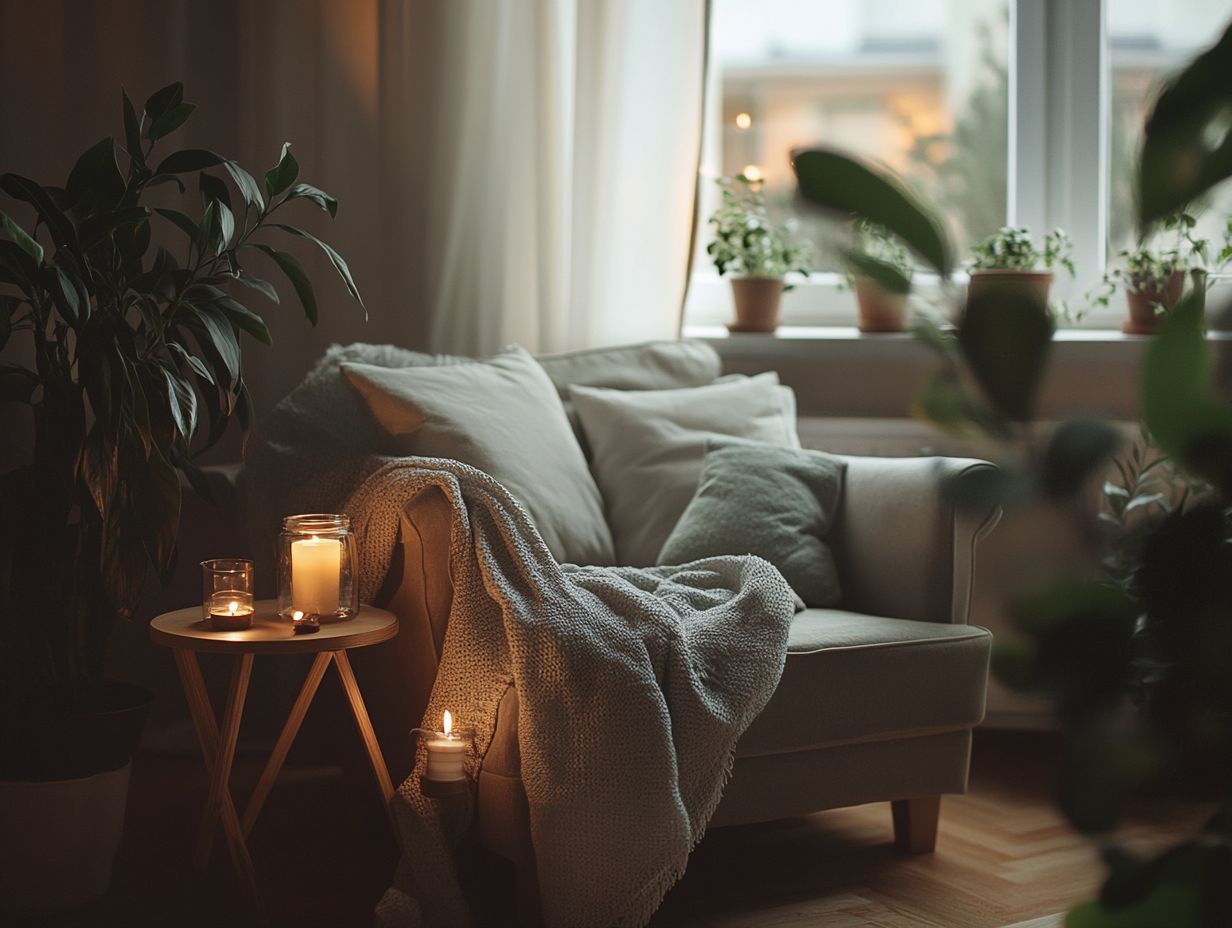
Whether in the mountains, at Inspiration Point in California, or in the comfort of your home, taking time to reflect and plan for the future during your personal retreat can truly provide the clarity and direction you need for your growth journey. Use journaling and meditative practices to delve into your aspirations, values, and goals.
This intentional reflection enhances your self-awareness and lays the foundation for actionable steps that can lead to genuine transformation and fulfillment.
During a personal retreat, you can experience a spiritual connection that deepens your understanding of yourself and the divine.
By carving out moments of stillness, you create space for thoughts and feelings to emerge, revealing insights that will guide your path forward. You might want to try techniques like free writing, where your unfiltered thoughts flow freely onto the page, or structured journaling that prompts you to dig deeper into your motivations and desires.
Engaging in guided imagery exercises can also illuminate potential futures, encouraging you to make proactive decisions.
These practices contribute to holistic well-being and inner peace. This blend of introspection and planning during your personal retreat sets the stage for a more purposeful existence.
Empower yourself to navigate your journey with confidence and intention. Taking deep breaths and engaging in breathing exercises can further enhance your experience.
Common Queries About Personal Retreats
What is a personal retreat at home?
A personal retreat at home is a designated space and time that you create for yourself to focus on relaxation, self-care, and reflection. It allows you to disconnect from the outside world and recharge your mind, body, and spirit.
This can also transform into a spiritual retreat where you connect with God, find freedom, and experience healing.
Why should I create a personal retreat at home?
Creating a personal retreat at home can lead to self-awareness, inner peace, and emotional release. It provides numerous benefits, such as reducing stress, increasing mindfulness, boosting creativity, and improving overall well-being.
This dedicated space and time for self-care and introspection can significantly contribute to personal growth and emotional health.
How do I choose the perfect location for my personal retreat at home?
The location for your personal retreat at home should be quiet and comfortable, such as a spare room, a cozy corner in your bedroom, or an outdoor spot in your backyard. Choose a space that feels peaceful and inviting to you.
If possible, find a place surrounded by nature to enhance your sense of solitude.
What activities can I do during my personal retreat at home?
The activities you choose will depend on your personal preferences and goals. Some ideas include meditation, yoga, journaling, reading, taking a bath, or enjoying nature.
You might also engage in creative activities like painting or reflective activities like listening to music. The key is to choose activities that promote relaxation and self-care.
How can I make my personal retreat at home feel special and unique?
There are many ways to make your personal retreat feel special. Decorate the space with calming colors and items, such as candles, plants, or soft blankets.
Play soothing music or use essential oils for aromatherapy. Incorporate special treats, like your favorite snacks or drinks, to indulge in during your retreat. Consider dedicating a corner for quiet time and emotional release.
Start planning your personal retreat today and explore the transformative benefits it can bring to your life!
How often should I do a personal retreat at home?
This regular practice supports mental health, physical health, and spiritual health.
The frequency of your personal retreat at home will depend on your personal schedule and needs. It can be a weekly, monthly, or even a quarterly practice. The important thing is to schedule it in advance and prioritize this time for yourself. It’s also beneficial to have shorter daily rituals or mini-retreats to maintain a sense of balance and relaxation in your daily life. Regular retreats help in achieving mental health and physical health balance.



